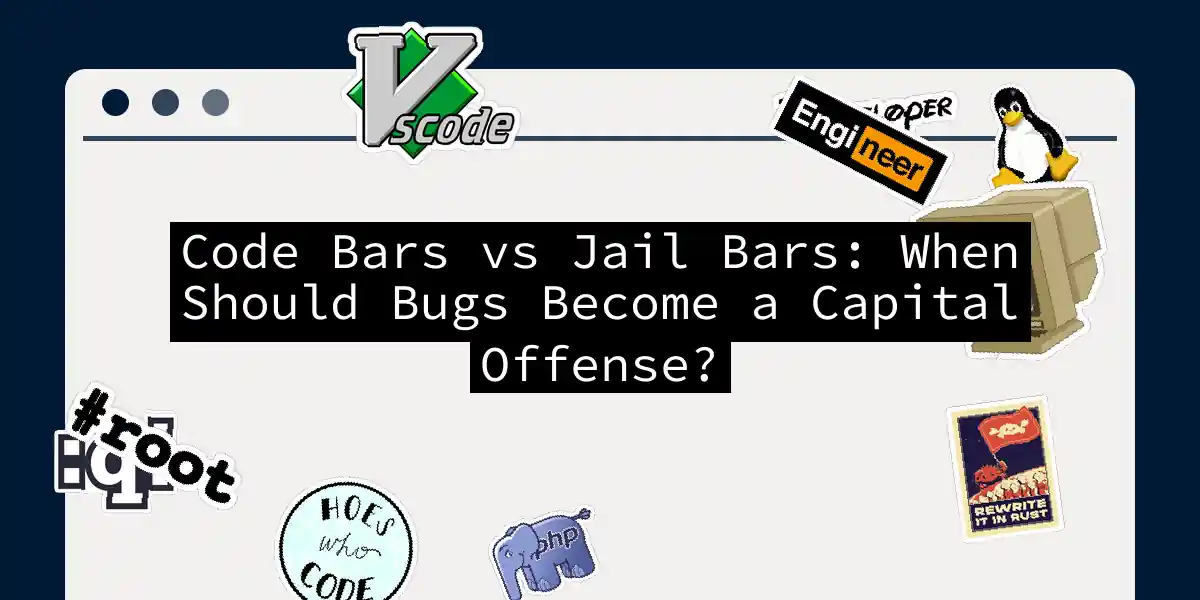Picture this: You’re a developer who just pushed a typo-laden commit. Little do you know, that missing semicolon will soon become the “semi-colon” on your criminal record. Extreme? Maybe. But as data breaches like the 2025 M&S customer data leak and DBS Bank’s third-party vendor compromise make headlines, society’s patience is wearing thinner than a junior dev’s coffee during crunch time.
The Great Blame Game: Anatomy of a Breach
Let’s dissect a modern breach using the 2025 M&S incident as our guinea pig:
This breach chain reveals three critical pressure points:
- Vendor security practices
- Network segmentation
- Data encryption at rest But here’s the rub - none of these were directly in the application developer’s control. As the SEC’s 2024 cybersecurity charges showed, responsibility often gets distributed like a bad game of hot potato between developers, ops teams, and C-suite executives.
When Code Kills Careers: A Developer’s Survival Guide
Don’t want your next pull request to become Exhibit A? Here’s my bulletproof checklist: 1. The “I’m Not Going to Jail” Starter Pack
# Always assume your code will be attacked
from security import DefenseInDepth
class UserDataHandler:
def __init__(self):
self.encryptor = EncryptionFactory.get_aws_kms()
self.audit_log = TamperProofLogger()
def handle_request(self, request):
try:
self.validate_input(request)
processed = self.sanitize_data(request)
encrypted = self.encryptor.encrypt(processed)
return encrypted
except Exception as e:
self.audit_log.log_failure(e)
raise SecurityException("Nice try, hackers!") from e
2. The Liability Limbo Dance Recent legal developments have turned coding standards into minefields:
- The EU AI Act now treats certain algorithms like controlled substances
- SEC disclosure rules make omission of known vulnerabilities a white-collar crime
- State privacy laws create 50 shades of compliance headaches A recent survey of Fortune 500 companies found that 68% now require developers to complete “jail awareness training” - though whether this teaches secure coding or prison survival skills remains unclear.
The Verdict: Keyboard Warriors vs The Law
While the SEC’s $4M settlement with SolarWinds-affiliated companies shows regulators’ teeth, criminal charges remain rare. But consider this thought experiment: If a surgeon’s mistake kills a patient, it’s malpractice. If a pilot’s error crashes a plane, it’s manslaughter. If a developer’s code exposes millions… it’s a “learning experience”? The counterargument comes from an unlikely source - prison architects. As one warden joked: “Our cells can’t handle developers’ demands for standing desks and artisanal coffee.”
Your Turn to Judge
Where do you stand in this great debate? Let’s crowdsource some justice:
1. [ ] Developers should face criminal charges for gross negligence
2. [ ] Fines and professional bans are sufficient
3. [ ] Make CEOs do perp walks instead
4. [ ] This is why I stick to `console.log("Hello World")`
Drop your verdict in the comments. Bonus points if you can suggest prison tech stacks (I hear COBOL is making a comeback in the IT pen). Remember - in the court of public opinion, your code is always under scrutiny. Now if you’ll excuse me, I need to go audit my node_modules… just in case.
